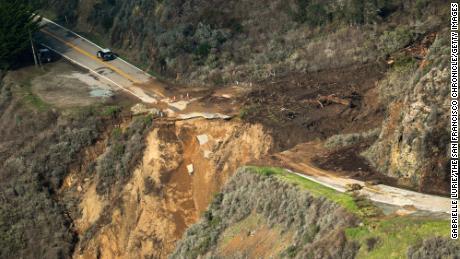On our hike at Devil's Slide last weekend we did more than marvel at the landscape. I noted that as amazing as this (old) stretch of road was when it was Highway 1, it's even more amazing now as a hiking/biking trail. That's because taking it slower than 35pmh, much slower, provides time to see things we'd miss from inside a car. For example, there were wildflowers; you saw some of those in my two previous blogs on this trip. But there were also birds and battlements.

One of the things we were able to see at walking speed was this pair of ravens perched just a few steps from the edge of a 200+ foot cliff. They're kind of playful. One is pecking at the other with its beak.

Except it's not exactly pecking. I believe it's grooming, picking small bits of debris out of another's feathers. It's a form of affection. The birds are likely a mated pair and they're doing the raven equivalent of holding hands on a nice day on the coast.
By the way, when I say they're just a few steps from the edge of a cliff, I mean this:

The birds were on the shoulder of the road you see in the upper left of the frame. This is a picture I took a few minutes before we saw the birds. The condition of the cliff immediately below the road is testament to why this is called Devil's Slide and why Highway 1 has been rerouted through a tunnel.
BTW, the grass covered granite knob in the center of the picture is called Egg Rock. You may notice a trail diagonalling up from the road to the top of the rock. That's actually an old, narrow paved road. At the top, under than small stand of trees, is a WWII battlement. The government built fortified gun batteries along the coast around San Francisco to watch for, and begin the fight back against, enemy assault. As with other batteries in the area, the guns were never fired in anger.
The well disguised battlement atop Egg Rock isn't the only one in the immediate area. Less than a mile south there's a fairly obvious one sitting another another knob:

This one's open to the public... or what's left of it is, anyway. Our friend Devlin remarked that there used to be sign at the edge of the road. "What did it say?" I asked. "NO PARKING FOR AXIS POWERS?" 🤣

We walked around the old fortification atop the cliff without going in. There is a path to scramble up into the concrete bunker around the right in the back. There's really nothing inside, though, except the reek of piss and weed. There are so many nicer things here; basically all the views.


One of the things we were able to see at walking speed was this pair of ravens perched just a few steps from the edge of a 200+ foot cliff. They're kind of playful. One is pecking at the other with its beak.

Except it's not exactly pecking. I believe it's grooming, picking small bits of debris out of another's feathers. It's a form of affection. The birds are likely a mated pair and they're doing the raven equivalent of holding hands on a nice day on the coast.
By the way, when I say they're just a few steps from the edge of a cliff, I mean this:

The birds were on the shoulder of the road you see in the upper left of the frame. This is a picture I took a few minutes before we saw the birds. The condition of the cliff immediately below the road is testament to why this is called Devil's Slide and why Highway 1 has been rerouted through a tunnel.
BTW, the grass covered granite knob in the center of the picture is called Egg Rock. You may notice a trail diagonalling up from the road to the top of the rock. That's actually an old, narrow paved road. At the top, under than small stand of trees, is a WWII battlement. The government built fortified gun batteries along the coast around San Francisco to watch for, and begin the fight back against, enemy assault. As with other batteries in the area, the guns were never fired in anger.
The well disguised battlement atop Egg Rock isn't the only one in the immediate area. Less than a mile south there's a fairly obvious one sitting another another knob:

This one's open to the public... or what's left of it is, anyway. Our friend Devlin remarked that there used to be sign at the edge of the road. "What did it say?" I asked. "NO PARKING FOR AXIS POWERS?" 🤣

We walked around the old fortification atop the cliff without going in. There is a path to scramble up into the concrete bunker around the right in the back. There's really nothing inside, though, except the reek of piss and weed. There are so many nicer things here; basically all the views.







![McWay Falls, Julia Pfeiffer Burns State Park, California [Aug 2021] McWay Falls, Julia Pfeiffer Burns State Park, California [Aug 2021]](https://ic.pics.livejournal.com/canyonwalker/33413618/771555/771555_original.jpg)
![McWay Falls, Julia Pfeiffer Burns State Park, California [Aug 2021] McWay Falls, Julia Pfeiffer Burns State Park, California [Aug 2021]](https://ic.pics.livejournal.com/canyonwalker/33413618/771278/771278_original.jpg)
